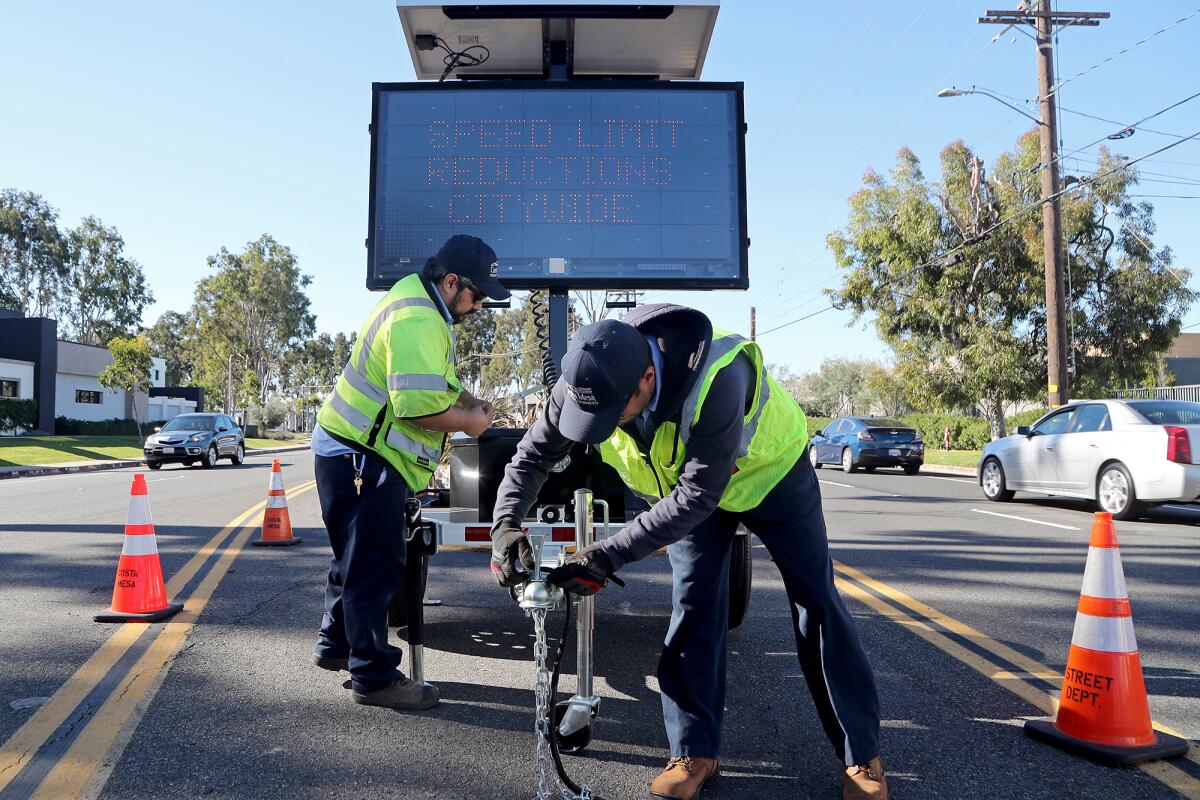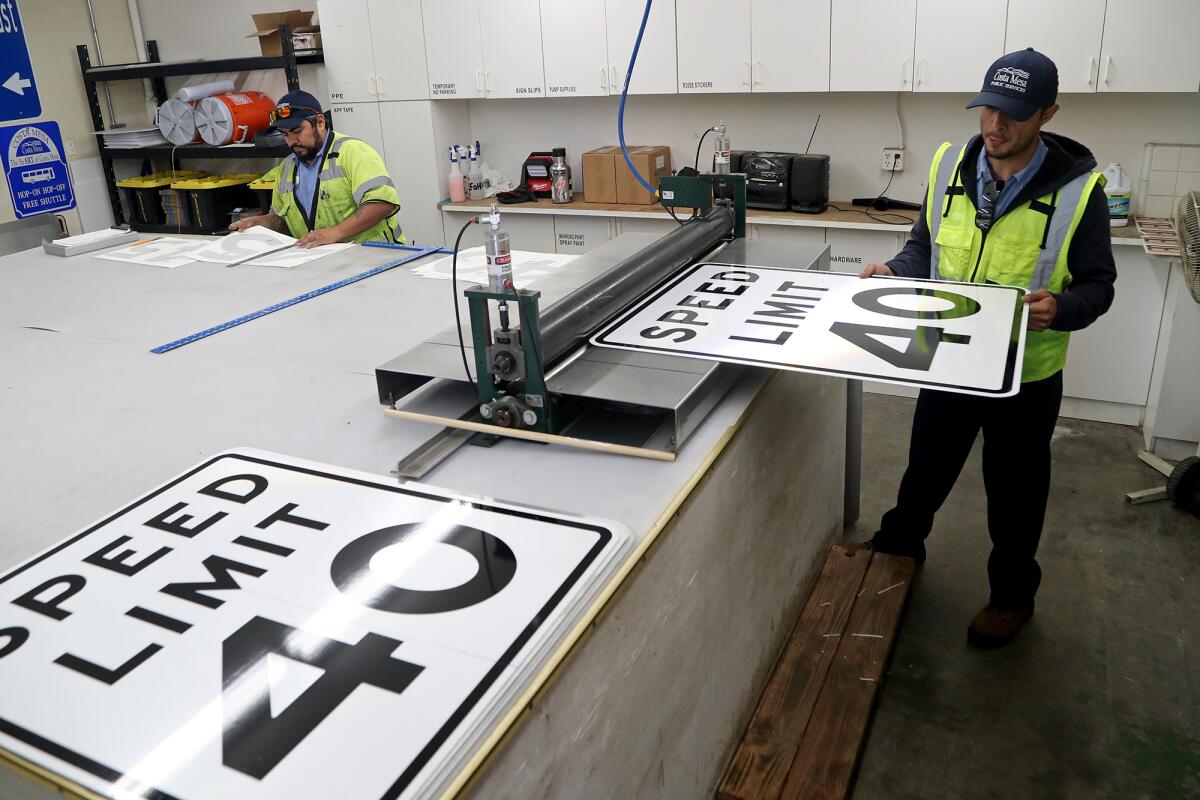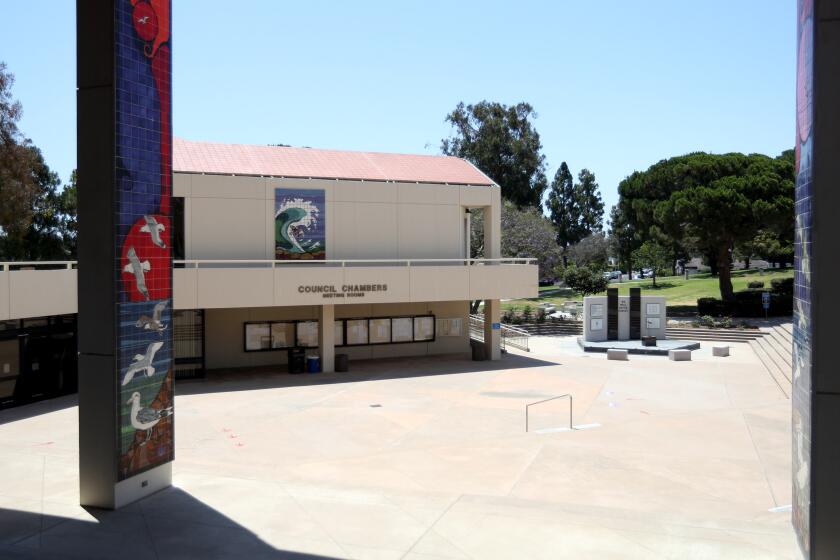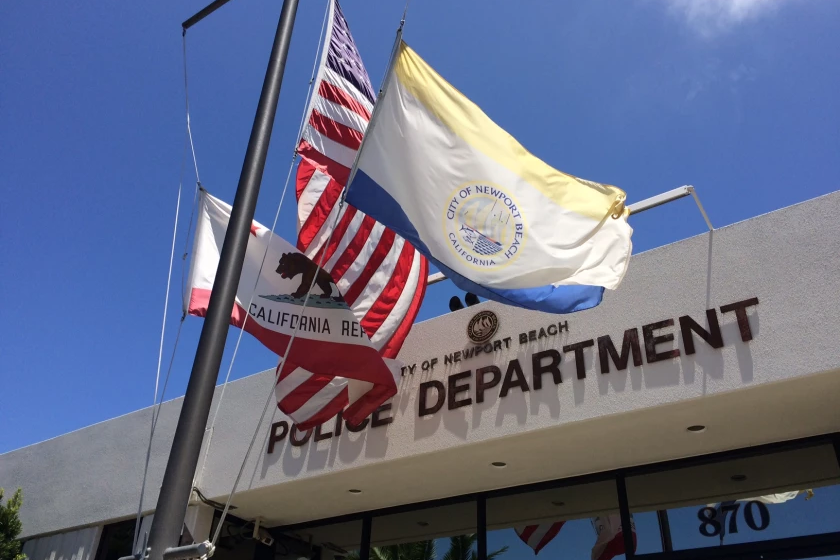Slow your roll — Costa Mesa lowers speed limit in 17 places thanks to change in state law

- Share via
On most California roadways, speed limits have been traditionally determined not by how fast motorists should be driving, but rather how fast most of them already drive.
Municipalities looking to set limits have been required to consider the prevailing speed of a thoroughfare — defined as the 85th percentile of actual speeds clocked — rounded up or down to the nearest 5 miles. The faster vehicles drove, the higher the speed limit was set.
But Assembly Bill 43, signed into law in October 2021, in part, gives cities that have completed traffic studies the leeway to reduce speeds. For example, if a prevailing speed is 43 mph, it may be rounded down to 40 mph instead of upward to 45 mph.
The effects of AB 43 are already being seen in Costa Mesa, where officials recently announced the reduction of speed limits on 17 nonresidential street segments and have indicated more reductions under sections of the new law may follow.

A city maintenance crew has been replacing speed limit signs and installing changeable message readers in various high-traffic areas to notify motorists of the changes in certain portions of major streets like Harbor and Newport boulevards and Placentia Avenue.
Jennifer Rosales, the city’s transportation services manager, said Monday a consultant conducted a traffic study last year that primarily focused on 46 segments of roadway but also considered another 90 or more segments beyond internal residential neighborhood roads where the new law might be applied.
A total of 17 segments were identified for reductions of mostly 5 mph, although two segments — including Adams Avenue, from Royal Palm Drive to Harbor Boulevard, and Avenue of the Arts, between Sunflower Boulevard and Anton Avenue — were reduced by 10 mph.
Another seven segments, where prevailing speeds would have previously dictated a 5-mph hike, were allowed to remain untouched under the new law, according to Rosales.
“The city would like, where we can, to lower speeds when justified and when the law allows us to,” she said. “Slower speeds are better, in general, for pedestrians, bicyclists and vulnerable people.”
That’s something with which westside resident David Martinez, who uses a bicycle as his primary mode of transportation, completely agrees.
A member of the city’s Active Transportation Committee, Martinez helps make recommendations to staff and officials for how and where areas might be made safer for pedestrians and cyclists.
“Speed is very often correlated with how deadly or how dangerous a collision with a pedestrian or cyclist is,” he said Tuesday. “The slower the car, the lower your chances of being seriously injured, so these speed limit reductions could really help in preventing serious injuries.”
Russell Toler is a Costa Mesa planning commissioner and member of Costa Mesa Alliance for Better Streets (CMABS), a nonprofit formed by residents in 2019 to stay abreast of changes in street design and land use and collaborate on projects that improve the quality and safety of public spaces.
He said the speed limit reductions, while not a cure-all of Costa Mesa’s traffic woes, are a step in the right direction.
“This 85th percentile rule, it’s an obscure thing that takes a while to explain, but everybody has some feeling of, that’s not right, it shouldn’t be this way,” he said. “I don’t think a change in speed limits, on its own, is going to do much. But it’s something, and it sends the right message.”
Both Toler and Martinez believe changing the design of streets to naturally lower speeds is what’s ultimately needed in Costa Mesa, as it has the potential to calm traffic and reduce the prevailing rates of travel upon which limits are based.
“My hope is more people take advantage of cars going slower and get out of their cars and start walking and biking to where they need to go,” Martinez said.
All the latest on Orange County from Orange County.
Get our free TimesOC newsletter.
You may occasionally receive promotional content from the Daily Pilot.









